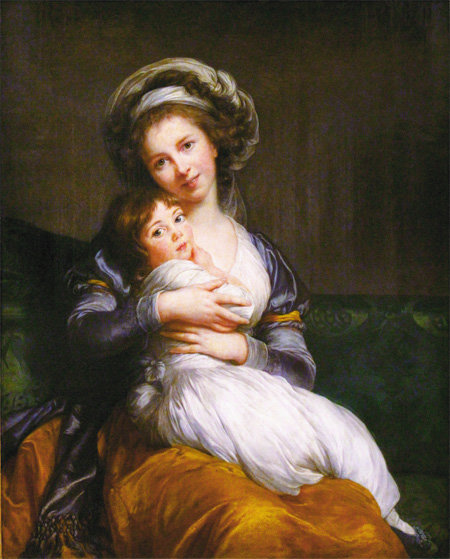From Donga:
It is a portrait of a beautiful combination of a happily-looking mother and her young daughter in her arms staring out of the frame. Drawn by 19th-century French artist Élisabeth Vigée Le Brun, the painting delivers the warmth of motherly love. However, it came under fire upon being released to the public. Here is why.Share
Le Brun was fortunate to learn drawing at a young age as her father was an artist. Working as a professional portrait painter from her early teen days, she earned enough money to support her family after her father passed away when she was 15 years old. Joining the Saint Luc Academy in Paris at the age of 19, she married a man who was a painter and art dealer two years later. Le Brun enjoyed enormous popularity among upper-class clients not only thanks to her excellent drawing skills but also to gorgeousness, fashionable tastes and sociability. As she captured the attention of Marie Antoinette, Le Brun garnered fame as the queen's official artist and member of the Royal Academy.
The drawing is a self-portrait of Le Brun that she completed at the age of 31. With her daughter Julie in her arms, she looks deeply happy. However, the painting stirred controversy when it was exhibited at the Salon of 1787. Not only other artists but also patrons pointed an accusatory finger at the painting for a single reason. Their criticism targeted the fact that the painting shows a woman grinning from ear to ear, which then was regarded as an outright infringement of traditional arts.
Le Brun was met with bigger troubles when she had to flee France with her daughter as her patrons were brought to justice in the aftermath of the French Revolution. She wandered around many countries while taking care of the little girl on her own for 12 years before coming back to her motherland. She drew portraits of celebrities and famous figures for money and served as a member of the Academy in 10 cities. (Read more.)


















No comments:
Post a Comment